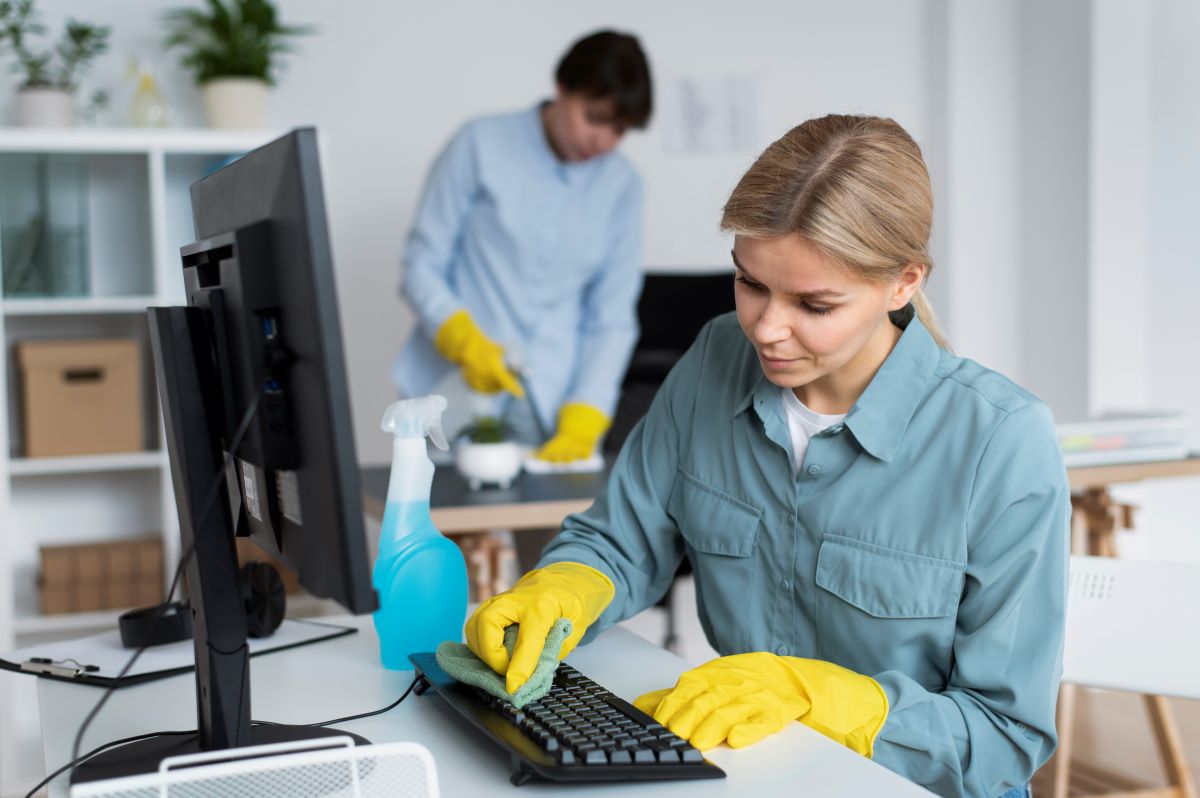Maintaining a clean and sterile medical office is not just about making a good impression—it’s about protecting public health. In 2025, cleaning standards for healthcare environments have become even more rigorous, with advanced protocols in place to ensure the safety of both patients and staff. Whether you run a private practice, dental clinic, or diagnostic center, understanding these new standards is critical to meeting compliance requirements and fostering trust among your clientele.
The Rising Importance of Medical Office Cleaning
The post-pandemic era has reshaped how medical facilities approach cleanliness. Infections acquired in healthcare settings, known as HAIs (healthcare-associated infections), remain a major concern. This has pushed the medical industry to adopt stricter disinfection practices, invest in advanced cleaning technology, and follow updated CDC and OSHA guidelines.
To help manage these requirements efficiently, many healthcare providers now rely on medical office cleaning services in Knoxville that specialize in sanitizing clinical environments. These professional services are trained in the latest cleaning protocols and use medical-grade disinfectants, which significantly reduce the risk of cross-contamination and pathogen spread.
Key Cleaning Standards in 2025
As we look at cleaning protocols in 2025, several crucial standards have been introduced or enhanced:
- Electrostatic Disinfection
This technology ensures that disinfectants reach every surface by spraying a fine mist that electrostatically wraps around objects. It’s especially effective for high-touch areas in exam rooms and waiting areas. - UV-C Disinfection Systems
Ultraviolet light technology is increasingly used for terminal cleaning after patient hours. These systems eliminate bacteria and viruses without chemicals, providing an added layer of protection. - EPA-Approved Disinfectants
Only products listed on the EPA’s List N are approved for use in medical offices. These disinfectants are proven to kill emerging viral pathogens, including SARS-CoV-2 variants. - Cross-Contamination Prevention
Color-coded cleaning materials, disposable supplies, and strict cleaning routes help prevent the spread of contaminants from one area to another. - High-Touch Point Focus
Surfaces such as doorknobs, light switches, faucets, exam tables, and chairs are cleaned multiple times daily. - Documentation and Compliance Tracking
Cleaning teams now maintain digital logs for compliance audits, including what was cleaned, when, and which disinfectants were used.
The Role of Professional Cleaning Services
In a fast-paced medical environment, delegating cleaning to in-house staff is no longer sufficient. Professional commercial cleaning services in Knoxville bring expertise, certification, and consistency to the table. They adhere to protocols mandated by OSHA, CDC, and HIPAA, ensuring your practice remains both compliant and safe.
Outsourcing to a commercial cleaning company also brings benefits like:
-
Scheduled deep cleaning without disrupting patient care
-
Staff trained specifically in healthcare sanitation
-
Use of advanced equipment and disinfectants
-
Flexibility to scale services during flu seasons or health emergencies
Common Areas That Require Specialized Cleaning
Each area of a medical office requires a tailored cleaning approach. Here’s a quick breakdown:
-
Reception & Waiting Areas: Disinfection of chairs, desks, and kiosks
-
Exam Rooms: Frequent sanitization of medical instruments and patient contact surfaces
-
Restrooms: Continuous upkeep with special focus on touchpoints
-
Staff Areas: Kitchenettes, break rooms, and locker rooms cleaned to prevent cross-infection
-
HVAC Vents: Routine filter changes and cleaning to ensure air quality
Choosing the Right Cleaning Partner
When selecting a cleaning partner, medical practices should consider:
-
Certifications in medical facility cleaning
-
Proven track record and reviews
-
Staff training programs
-
Availability for emergency or after-hours cleaning
-
Use of eco-friendly and EPA-approved products
The Cost of Non-Compliance
Failing to meet cleaning standards can have serious consequences, including
-
Patient health risks and HAIs
-
Legal liabilities or penalties from OSHA and health departments
-
Damage to your facility’s reputation
-
Loss of accreditation or insurance complications
In 2025, cleanliness is not optional—it’s a regulatory, ethical, and operational imperative.
FAQs
Q1: How often should a medical office be cleaned?
A: Exam rooms and high-touch surfaces should be disinfected after each patient visit. Common areas should be cleaned multiple times a day, and the entire office should undergo deep cleaning at least weekly.
Q2: What disinfectants are safe for medical use?
A: Only EPA-registered disinfectants, particularly those listed on EPA’s List N, should be used. These are tested against bacteria, fungi, and viruses, including emerging variants.
Q3: Can general commercial cleaners handle medical office cleaning?
A: Not all commercial cleaners are trained in medical sanitation. Look for services that specifically offer medical office cleaning with certifications in healthcare compliance.
Q4: What is the difference between cleaning and disinfecting?
A: Cleaning removes dirt and impurities from surfaces, while disinfecting kills pathogens. Both are essential and should be done using approved products and techniques.
Q5: Do I need to clean HVAC systems too?
A: Yes. HVAC systems can circulate airborne pathogens. Regular filter replacement and duct cleaning are vital in a healthcare setting.
Book your cleaning appointment today.
Read more: Why Your Bank Needs Trained and Certified Cleaning Professionals

Leave A Comment